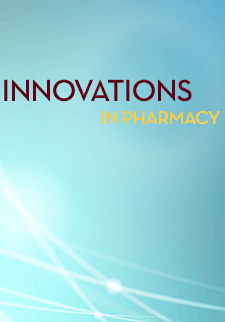Impact of Adherence Education and Monitoring on Community Pharmacy Performance Scores and Patient Satisfaction
Chelsea Sprouse
Kroger Health
Morgan Grant
Kroger Health
Jaime Remines
Kroger Health
Pramit Nadpara
Virginia Commonwealth University
Jean-Venable Goode
Virginia Commonwealth University
DOI: https://doi.org/10.24926/iip.v11i3.3369
Keywords: patient education, medication adherence, community pharmacy
Abstract
Background: Adherence, specifically to noninsulin diabetes medications, statins, and renin-angiotensin system antagonists (i.e. angiotensin-converting-enzyme inhibitors (ACEi), angiotensin II receptor blockers (ARBs), and aliskiren), is a measure tracked by the Centers for Medicare and Medicaid Services (CMS) to give Medicare Part D plans a star rating; pharmacies are impacted by these star ratings. The pharmacy is given a performance score based on the measure. Some pharmacies use a performance information management platform (PIMP) that allows pharmacies to better understand performance information to impact patient care.
Objectives: (1) To evaluate if a monthly adherence monitoring and education service impacts the percentage of patients adherent determined by pharmacy performance scores; (2) To determine patient satisfaction with the service in a large community pharmacy chain.
Methods: A six-month prospective interventional pilot study including patients with a proportion of days covered (PDC) of less than 80% for oral diabetes or renin-angiotensin system antagonists (RASA) medications was conducted in two pharmacies of a large community pharmacy chain in Southwest Virginia. Using pharmacy internal data analytics and PIMP data, the percentage of patients who are adherent to oral diabetes or RASA medications was determined including the baseline PDC for each patient. At the start of the study, the standard of care in this large community chain pharmacy was to address adherence, follow-up in one month and every three months thereafter. In this study, pharmacists provided monthly telephonic adherence monitoring and education for a six-month period. Each session was scripted for medication adherence history, education and data collection. The pharmacist provided guidance and counseling based on how the patient answered the questions. Pharmacists gathered information about adherence patterns and behaviors using a 14 item Likert-scale and multiple choice-based questionnaire during the first session. After completion of the final adherence monitoring and education session, pharmacists gathered patient satisfaction information using an eight item Likert-scale questionnaire. At the end of the six-month period, using PIMP data, the percentage of patients adherent to oral diabetes or RASA medications was determined based on pharmacy performance scores. The data was analyzed using uni-variate and bi-variate statistics to determine if there was a difference in pharmacy performance scores from the pre-study analysis. The adherence patterns and behaviors, as well as patient satisfaction with the program was evaluated to determine factors influencing nonadherence.
Results: A total of 55 patients were identified in two pharmacies, ten of which were excluded or declined involvement, leaving 45 enrolled in the adherence monitoring and education service. Of the 45 enrolled patients, ten completed the adherence patterns and behaviors questionnaire. About half of the patients were men (50.95%) with an average age of 71.17 years and taking an average of 6.55 prescription medications. All patients had Medicare Part D insurance and majority had a yearly income of less than $40,000. The average baseline PDC was 68.92. In pharmacy 1, the average performance score for oral diabetes medications trended down and the average performance score for hypertension medications trended up over the study period. In pharmacy 2, the average performance score for oral diabetes medications trended up and the average performance score in hypertension medications trended up over the study period. The adherence patterns and behaviors questionnaire revealed the majority of patients rarely forgot to take medications or run out of medications. Additionally, cost of medications did not seem to impact adherence and majority of patients knew the names and indications of their medications. Only one patient completed the patient satisfaction survey.
Conclusions: An adherence monitoring and education service had mixed results in improving patient adherence and pharmacy performance scores. Only one patient completed the satisfaction survey, thus no conclusions can be made regarding patient satisfaction of the program. More research needs to be done regarding telephonic adherence programs.
Article type: Original Research



